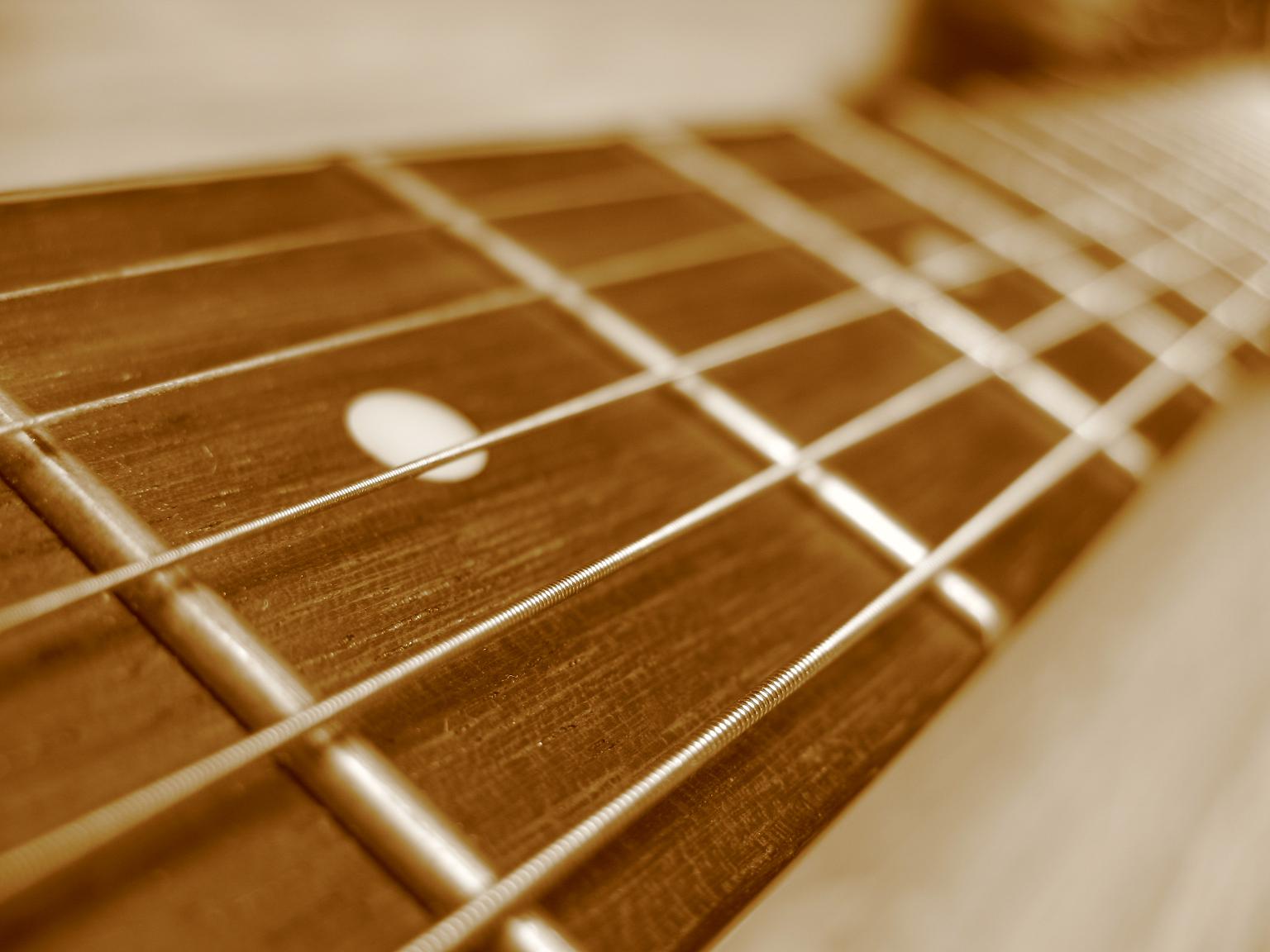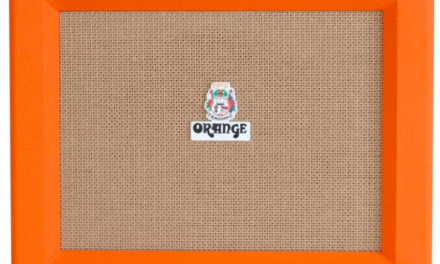NOTE – I’m glad I did this. I can now look back and see how stupid I was.
Step 1: Take it to someone who knows what they’re doing and give them $150 – $200.
There ya go!
But I wouldn’t be the Budget Guitarist if I were willing to fork up 2 hundred for something I might be able to do myself, right? I’ve learned how to do my own electronics. I’ve learned how to file fret ends, using the proper Stew-Mac tools. Why not attempt a refret? Normally the answer would be “because I might totally botch the job,” but in this case I had nothing to lose. My yellow Strat, a MIM with vintage frets that had more dents than a NYC cab, was a likely candidate. I’ve hated the vintage frets since I learned what a vintage fret actually was. Why? Because they are awful. Try to bend notes and your finger’s up against the wood. The smallest dent and you’ve got a bad dead note spot. They are from a time when men played jazz on guitar and no one ever heard of vibrato or bent notes.
My original plan was to buy a new Fender MIM neck with medium-jumbo frets and just bolt it on, because that’s what you can do with Strats. A new MIM neck costs about $200, which is what you’d pay for a refret. Another idea would be to buy a new American neck from Fender for around $400, but I don’t need to put that sort of money into my secondary Strat. The frets, on the other hand, I got on Amazon for around $12.
I’ve watched the StewMac videos, I’ve got the Dan Erlewine videos, and I know the concepts of what needs to be done. So I decided to go for it. But I needed some specialized tools first. There’s no substitute for a good fret puller. Nothing you can buy in Lowes will do the job correctly. The StewMac little fret puller is about $26, but I found a generic one for $7 on Amazon. So I bought it. Works OK. I suspect the StewMac puller is better, but this one is fine for now.
Before doing anything, I removed a couple of frets from the junk neck I bought at last year’s Orlando International Guitar Convention. I was able to do it fairly easily.
I took apart my yellow Strat, sneered one last time at the tiny vintage frets, and heated up my soldering iron. I taped off the fretboard just like in the videos, and ran the soldering iron along the fret to heat it up. And pulled out the first fret. It was slow going. I had a suspicion that heating up the fret did nothing. The next fret, I skipped the soldering iron, and there was no difference. Did Fender not use any glue in this MIM Strat when it was made? If they did, they used a teeny teeny tiny amount. Didn’t heat the rest of the frets. After pulling about 5, I started to get the hang of it. But I used a linoleum cutter to score the sides of the frets, where the fret meets the wood, to “make it easier.” This proved to be a really stupid move, as it marked up the fingerboard for no reason. Luckily the new frets were wider and covered up my mistake.
With the frets off, I decided to put in one new fret, high up on the fretboard. I’d purchased the Fender medium frets, pre-radiused and pre-cut. My neck was a 9.5 radius, and so were the frets, so no problem, right? Wrong. If the frets had a slightly smaller radius it would be OK, because they’d even out as you put them in. But these frets had a slightly larger radius. If they didn’t go in well enough, they’d rock.
The tool I needed was the StewMac fret wire bender, which would have let me bend the wire a little more and would have made this job easier. I kept going anyway.
Another issue was that the original fret slots weren’t deep enough to handle the new frets. I got out a mini-hacksaw with a super thin blade and deepened the slots. Here’s another error – if you cut these slots too deep, you can still glue the frets in, but they won’t have as good contact with the neck and won’t sound as good. Also, if you widen the slots too much, the frets won’t stay in the wood and you’ll have to use more glue to keep them in solid, and that will also have a bad impact on the sound.
The tool I needed was a nice slot-cutting saw blade from StewMac. I just went with what I had.
I picked up a hammer at the flea market with a hard plastic side and a hard rubber side for like $5. The StewMac version is 5 times as expensive for a similar thing. My flea market hammer worked just fine putting the frets in. I used super glue in the slots, because I didn’t trust them – you skimp on tools, you pay the price. This guitar was not going to be a stellar example of awesome fretwork. This was my first refret and I wanted to learn by doing.
Precut frets, by the way, aren’t. What I mean is, they’re precut to be larger than you need, so that you can cut and file them down to the correct size. Frets aren’t easy to cut. I picked up a small bolt-cutter from Lowes that looked like it could easily do the job. Mistake. Yes, it cut the frets with no problem. But it didn’t allow me to get close enough to the fretboard. So after trimming all of the fret ends, they were still a good 1/8 of an inch away from where they needed to be. What to do?
The tool I needed was the Fret Cutter by StewMac, which, of course, I didn’t have.
My Cruztools wire cutters came to the rescue. They allowed me to get significantly closer to the neck, which meant less filing. But filing still. I got out a big bastard file (that’s actually a real name, by the way) and went to town on the fret ends to get them closer to the wood. I wouldn’t do that to my wire cutters again – it could beat the hell out of them fairly quickly.
I did all of my work on an old small white desk, which worked out fine. But at one point I barely bumped one of the fret ends with the top of a finger and it immediately put a deep hole into my flesh, which immediately started to bleed all over the place. Apparently skin is no match for sharp metal. Cold water, pressure, band-aid, back to work. One of the frets popped out while filing down the ends. I set it aside for when I finished filing so I could hammer/glue it back in.
I have two great fret files from StewMac – the three sided medium fret file and the fret end file. They’re both great tools for rounding and shaping a fret end. But they don’t take off much metal per pass. That’s a plus for doing fine detail work, but when you need to take off a lot of metal, it’s like painting with a toothbrush. I got out my file collection to find something to take off more metal per pass to get it close to where it needed to be. The medium fret file was up to the task. So while binge-watching America’s Book of Secrets and laughing at the stupidity of each episode, I filed those fret ends down, and then super-glued the frets that weren’t seated well enough.
Once the fret ends were filed well enough for me to play the thing without ripping up my left hand, I decided to put the neck back on and restring the guitar without doing any fret leveling. Not because I thought it would work – I knew it wouldn’t. But I wanted to see how off things were. And surprisingly, not much. There were a couple of frets that were standing up too high, totally screwing up the notes immediately below them. But in general the thing played. Time to level the frets. For my fret leveling tool I chose a little plastic and rubber sanding block from Lowes that came with three grades of sandpaper which attached to the block via velcro. StewMac sells sanding blocks that are radiused, but I had to make due. I marked up the frets with green marker, then leveled them. This part of the process actually worked very well. But of course that left a flat surface on the top of every fret, which I then had to hand-shape with the medium fret file. Which I did.
Guitar reassembled, and how does it play? Uh… mostly it plays OK. Which is fine, because I wanted this to be a learning experience, which it definitely was. I came close to doing a decent job, and where I made my mistakes I knew I was making them and didn’t much care, because this was about messing around with something I didn’t care that much about. So would I attempt another refret? Yup, but not without first getting all of the proper tools. The biggest thing I learned was that you really need to have the slots cut exactly right. If you cut them too wide, you’ll need superglue to do the actual holding and it won’t sound or sustain as good. The other thing is that the frets really need to be bend a bit more than the actual radius you need. Otherwise when you put them in, they’ll stick up on one end or the other and you’ll be screwed. I had to take several frets out and bend them some more myself, without the proper tool, and that sucked.
Summary
Even though I sort of didn’t take this project super seriously, I learned a lot about what it takes to refret a guitar. It takes the proper tools and patience. And you have to enjoy doing it. Did I enjoy doing this? Yeah, I did. I learned a lot. And I learned which tools I really, really need to have before attempting to do this again. I’ve always thought the StewMac stuff was overpriced, which it is. But sometimes having exactly the right tool for the job is the difference between good work and bad. My two StewMac fret files worked extremely well. Even the generic small fret puller tool worked OK. If you total up the cost of all the tools you need to do the job correctly, you’re looking at about $200, and that’s cutting a few corners. That’s the cost of just buying a brand new MIM Strat neck directly from Fender. Which would have a pro fret job done on it already. But that’s one guitar. I have like 11 or so, and will likely be getting more at some point. And you can’t just swap out the neck on a Gibson Les Paul, or even an Epiphone ES 339. By learning how to do my own fretwork, I’ll save a lot of money down the road. I’ll also be putting a whole lot of hours into working on guitars. Can’t wait!
List of Tools
Here’s what I will make sure I have for my next refret, with an asterisk next to the items I still need to purchase:
- Phillips screwdriver
- Optivisor
- Small fret pullers
- Soldering iron
- Painter’s tape
- Fret wire *
- StewMac Fret Cutter *
- Superglue
- Sanding block with various grit sandpaper
- StewMac Fret End file
- StewMac fret rounding file *
- StewMac three corner medium fret file
The rounding file is debatable. I can get by with the medium fret file I already own, and it gives me more control over the shape of the fret.
Pictures would have been helpful, but if you want to learn how to do your own frets, for the love of God don’t learn from me! Learn from Dan Erlewine. Get (or cough cough download) his DVD on basic fretwork, watch his tutorial videos on StewMac, and then bite the bullet and buy the StewMac tools you need.





